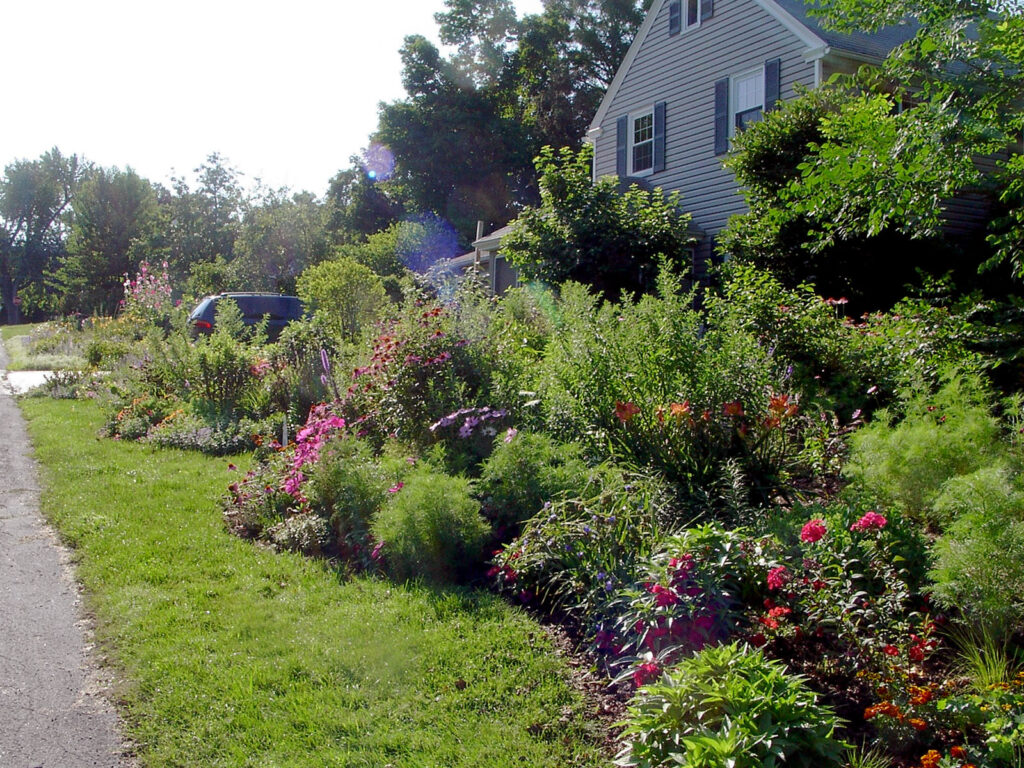
We live on a corner property, so our side yard runs along a road for about 180 feet, the length of our property. Our driveway bisects this length about halfway up. We use this “bottom” half as a flower garden bordered by a thin strip of grass. It also functions as our official Monarch Waystation, though in reality our whole yard includes milkweed and nectar plants — the main elements of a Monarch Waystation.
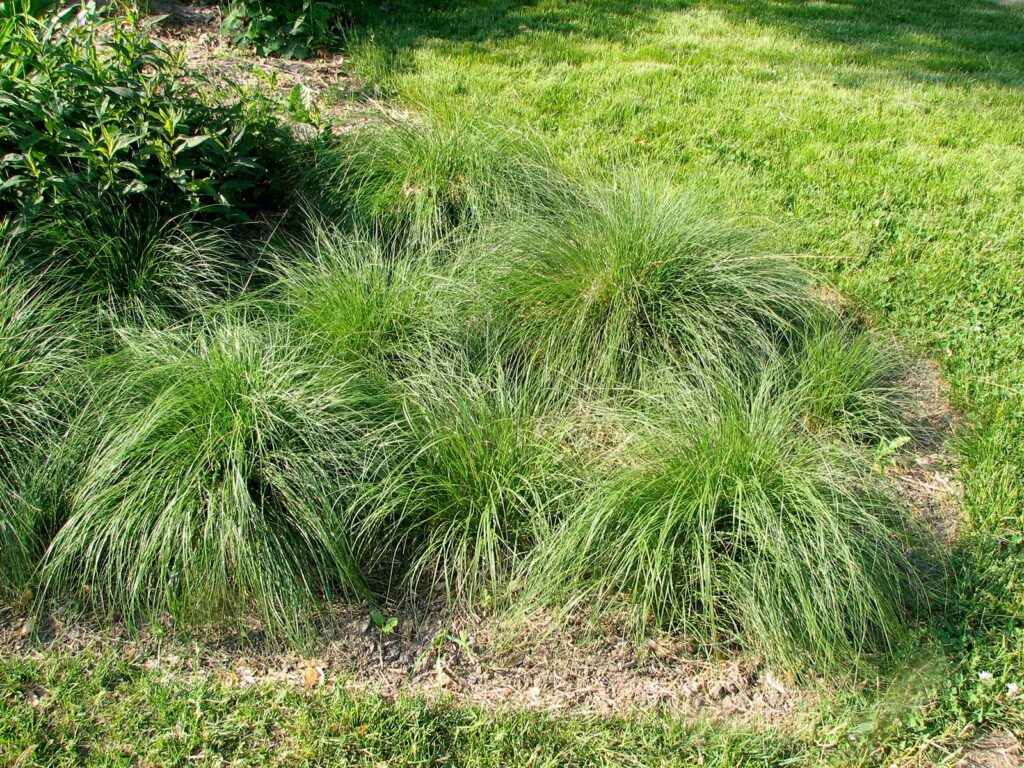
Here the prairie dropseed (Sporobolus heterolepis) in the front are just beginning to arise out of the brown remnants of last year’s growth. They do this themselves without any help! I just leave the old dried up grass there, and it decomposes, making the soil ever richer year by year.
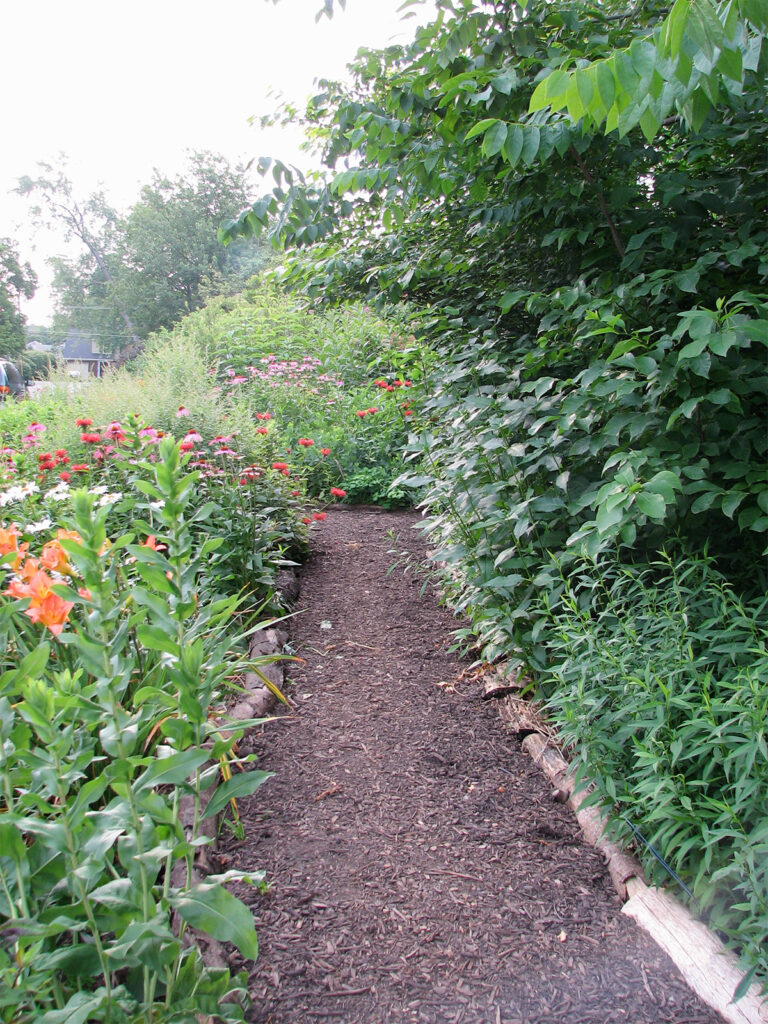
This is a path that runs parallel to the road at the side of our property. (We live on a corner, so we have lots of road exposure.)
It’s the “back” side of the flower garden along the road. The path isn’t really visible from the road, so it looks like there are just plants. It has swamp milkweeds (Asclepias incarnata) and other native nectar plants, bushes, and grasses for butterflies and insects.
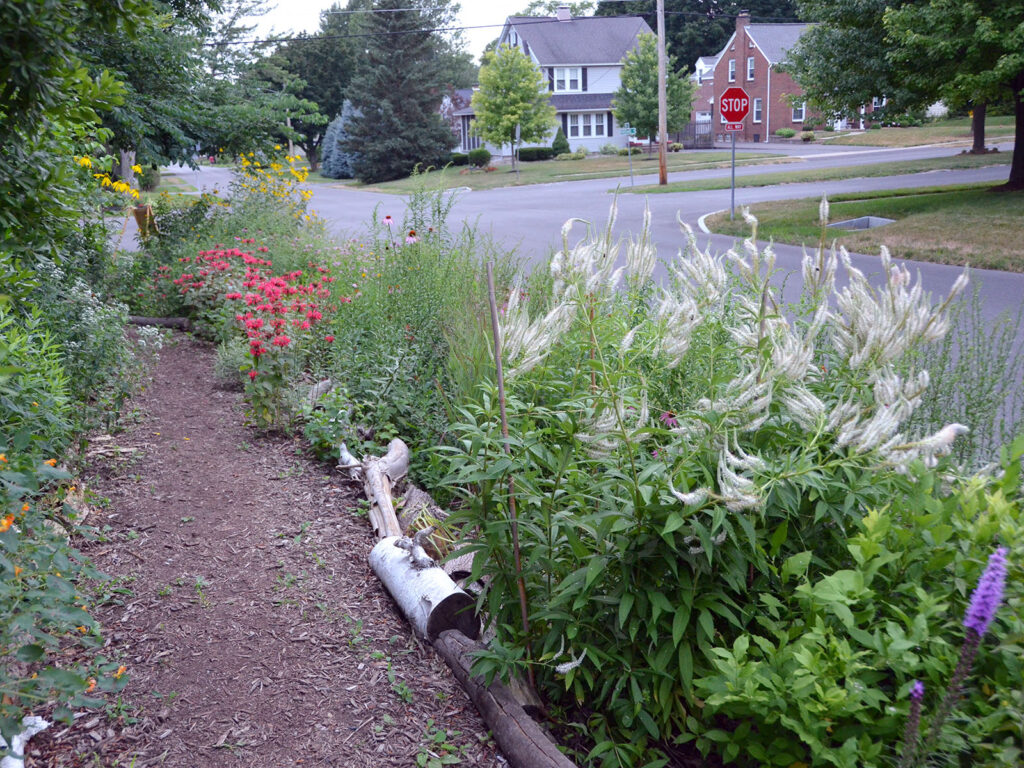
I love walking along the paths with the ever-changing variety of blooming flowers.
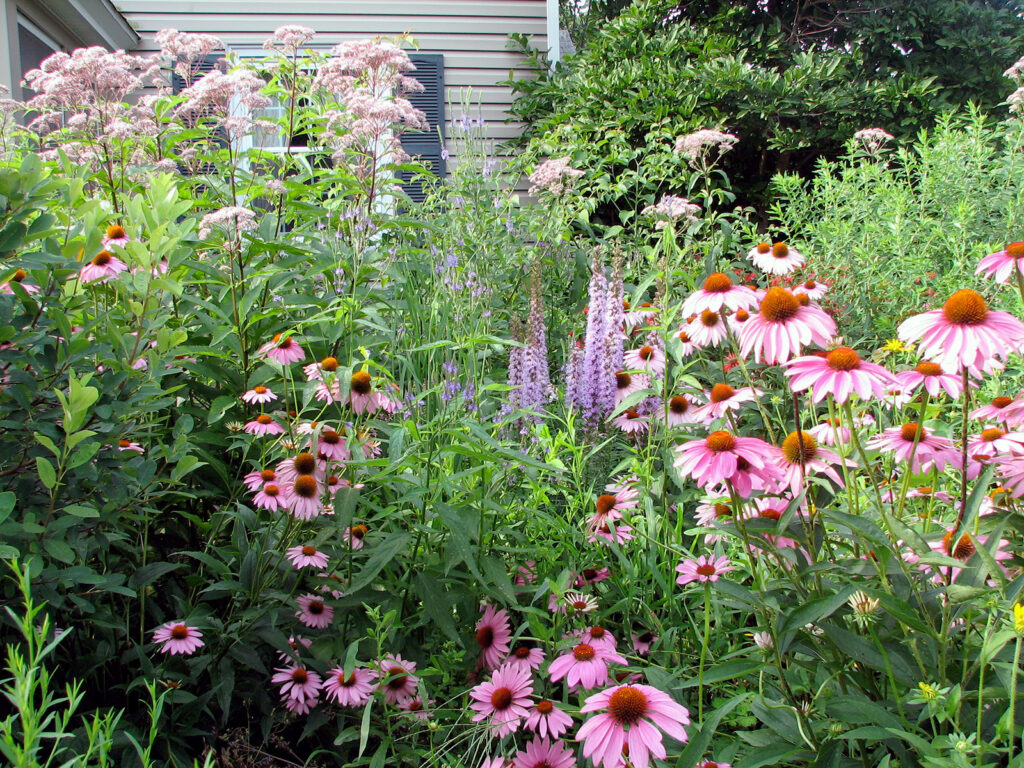
I have an assortment of flowers, most of which are wonderful sources of nectar. Butterflies and bees love this area.
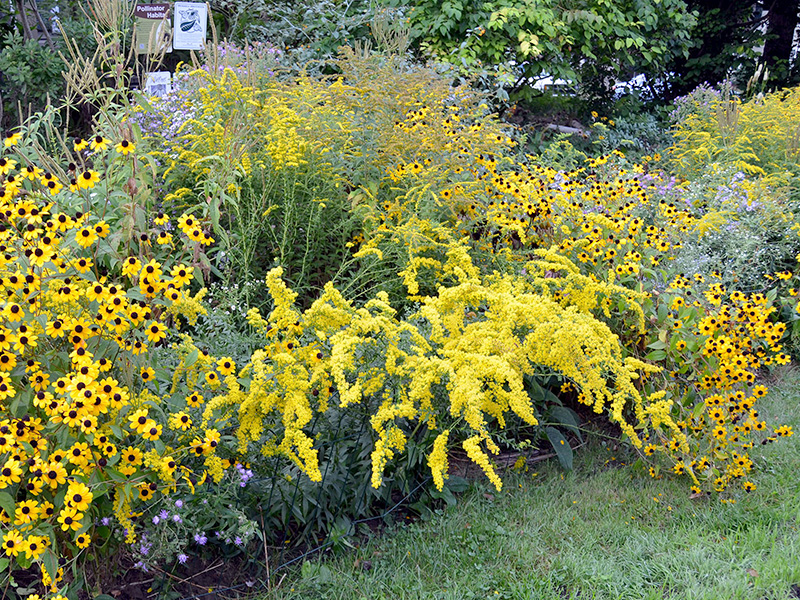
A whole different group of plants bloom in the fall.
Reflections
What a garden is, by definition, is a a humanly contrived, artificial construct of plants from all over the world that is usually assembled with little regard for ecological or biological principles. At the same time, this assemblage of plants exists in a world whose entire life force, whose every purpose of being, is driven by universal principles of environmental or ecological balance. … a garden might be thought of as a struggle between a piece of land trying to restore itself to a natural balance and a gardener who hasn’t a clue what that means. Thus begins the eternal battle between the gardener, the garden, and the forces of nature.… If we work with the laws of nature, we have a much better chance of developing a garden that functions as a balanced, naturalistic system should.
~ Eric Grissell, Insects and Gardens: In Pursuit of a Garden Ecology, pp. 12-13
Once one begins to think in terms of paths, one realizes that they already exist although invisibly. One doesn’t walk across a lawn every which way, only in the particular ways that get one from place to place. Some of the places are spaces in the human sense of the word—open areas for sitting, eating, playing. These are the clearings. Others might be spaces in the more usual animal sense of resources that are visited regularly: garbage pail, woodpile, vegetable garden, sandbox.It’s astonishing how little land a family really uses and how much can be left as Lebensraum for others. Who ever uses the front yard? Who strolls along the fence? When does anybody sit in the corner of the yard?
~ Sara Stein, Noah’s Garden: Restoring the Ecology of Our Own Back Yards, 1993, pp. 46-47
When we try to pick out anything by itself, we find it hitched to everything else in the universe.
~ John Muir (1838-1914)
